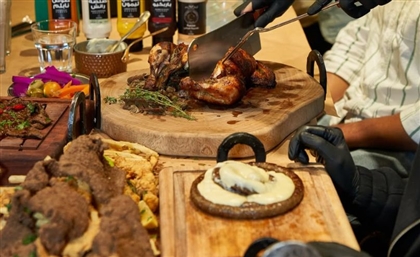A Comprehensive Guide to Pizza: an Authentic Italian Approach
Discover the untold story of pizza, straight from the heart of Italy.

Pizza, a simple yet extraordinary dish, has been subjected to countless adaptations and interpretations. While some may celebrate this diversity, others—those seeking true authenticity—find themselves lost in a sea of misinformation. This guide is not for those who seek pizza as fast food or laden with bizarre toppings. Instead, it serves as a definitive, no-nonsense guide to understanding pizza in its most authentic form, as it was meant to be made and enjoyed.
Pizza, in its purest form, is a product of Naples, Italy. While many cultures have laid claim to flatbreads, the pizza we know today—dough topped with tomatoes and cheese—originated in the 18th century. Its roots are humble, a food for the poor. But even in its simplicity, the balance of flavors and textures created a dish that has endured for centuries. Any discussion of pizza must begin with respect for its history in Naples, where pizza became the beloved dish of the working class before reaching international fame.
As it went about its natural evolution, the standard pizza began changing form and ingredients wherever it went in Italy. For instance, if you go to Turin in the Piedmont, you’ll likely come across pizza al padellino, which, unlike the level Neapolitan, has a thick soft crust topped with a variety of ingredients, from prosciutto to mozzarella. Go to Rome, and you’ll find a pizza alla carbonara with traditional guanciale and egg yolk. Going all the way down south in Palermo, the sfincione is unlike anything you would find in northern or central Italy. Its name comes from the Latin sfincia, meaning ‘sponge’ (which is where the Egyptians get ‘safinga’) because of its large, bulky shape.
Discernable differences notwithstanding, the basic building blocks of any pizza are not to be meddled with. In this article, we get down to the fundamentals of pizza, what it’s typically made of, the myths surrounding it, and the best places in Egypt to get it. Cominciamo!
The Dough

At the heart of a perfect pizza lies the dough. This is where misconceptions often begin, for not all doughs are created equal. Authentic Neapolitan pizza dough consists of just four ingredients: flour, water, salt, and yeast. That's it. No sugar, no olive oil, no added herbs. The flour must be high-quality Italian 00 flour, prized for its fine grind and soft texture. This gives the dough its characteristic elasticity, allowing it to be stretched thin without breaking.
The process of making the dough is just as important as the ingredients themselves. After mixing, the dough must be left to rise for 8 to 24 hours, depending on ambient temperature. A long fermentation process not only develops the dough’s flavor but also creates the ideal texture: airy, with just the right chew.
The Sauce

Pizza sauce should never be overly complicated. An authentic pizza sauce is made from raw San Marzano tomatoes, grown in the volcanic soil near Mount Vesuvius. These tomatoes have a perfect balance of sweetness and acidity, making them the only acceptable choice for Neapolitan pizza. The tomatoes are lightly crushed by hand, leaving some texture, and seasoned simply with a pinch of salt. No cooking is involved—the sauce cooks on the pizza itself in the high heat of the oven.
Where you begin to find more nuance is in the south (particularly Sicily), where the sauce often incorporates garlic, oregano, and sometimes sugar. The San Marzano tomatoes are also often substituted for native Sicilian Pachino tomatoes.
The Cheese

Here, many falter. Authentic Italian pizza is topped with either mozzarella di bufala (buffalo mozzarella) or fior di latte (cow’s milk mozzarella). The difference between these cheeses lies in the richness of their flavor.
Mozzarella di bufala is creamier and more decadent, while fior di latte is milder but still melts beautifully. What you won’t find on a true Italian pizza is pre-shredded, rubbery cheese or a blend of multiple cheeses. Simplicity is key. You will typically have mozzarella di bufala on a Neapolitan pizza, used in large, slightly-torn chunks. In contrast, Rome will often employ a mix of both, as well as a touch of sharp and salty pecorino romano.
For an even sharper cheese flavor, northern Italy prides itself on its pizza con gorgonzola, which is at once a buttery and salty creation found predominantly in cities like Turin and Milan.
Mozzarella should be sliced or torn into small pieces and distributed evenly but sparingly over the pizza. The goal is balance, not smothering the dough in cheese.
The Toppings

When it comes to toppings, the golden rule is restraint. Pizza was never meant to be a vehicle for excess. The most authentic pizzas include only a handful of ingredients, each chosen for its quality and ability to complement the others. Some traditional variations include:
Pizza Margherita: The gold standard of pizzas. Topped with San Marzano tomato sauce, mozzarella, fresh basil leaves, and a drizzle of extra virgin olive oil.
Pizza Marinara: The simplest form, with just tomatoes, garlic, oregano, and olive oil. No cheese.
Pizza Capricciosa: A slightly more indulgent option, featuring tomatoes, mozzarella, cooked ham, artichokes, mushrooms, and olives.
You’ll notice that toppings like pineapple, barbecue sauce, or overloaded meat selections are absent. Such combinations, while popular in some places, have no place in an authentic pizzeria. Every ingredient must be of the highest quality and used sparingly to allow the dough, sauce, and cheese to shine.
The Oven

One of the key elements that define a true pizza is the oven in which it is cooked. Authentic pizza must be baked in a wood-fired oven at around 485°C (905°F) for 60-90 seconds. The high heat ensures the crust develops a slight char—leopard spotting—and a light, airy structure while keeping the center of the pizza tender.
This is where home ovens fall short. While you can make a decent pizza at home, it will never truly replicate the magic of a wood-fired oven. The high temperature is critical for achieving the correct texture, something impossible in a standard kitchen oven. However, a pizza stone and preheating your oven to its maximum temperature can help you get as close as possible.
Debunking myths

Heartbreak in Italy takes on a very different form than most places in the world, having mostly to do with how far away one strays from an original recipe. In the world of pizza, there have been many false prophets, each laying claim to creations that many in the old country would look at with profound disapproval. Here are three of them, to name a few:
Deep-dish pizza: Let’s get this out of the way: deep-dish pizza, beloved in Chicago and touted as an "Italian" dish, is about as Italian as pineapple on pizza. It’s more like a pizza pie, really, with its thick, buttery crust and layers upon layers of cheese and sauce. It’s simply not the light, crisp experience you’ll find in Italy. The traditional Italian pizza is elegant, with a thin, almost delicate crust, and in Naples, the birthplace of pizza, they’d likely faint at the sight of a deep-dish monstrosity.
Pizza toppings galore: We all know someone who thinks the more toppings, the better. But in Italy, they’d probably raise an eyebrow at that tower of toppings sliding off your slice. Italians take a "quality over quantity" approach—think fresh buffalo mozzarella, ripe San Marzano tomatoes, and just a sprig of basil. That’s it. No meat lover’s madness or veggie overload. Each ingredient has its moment to shine, like a perfectly balanced cast in a play. Pile them all on, and your pizza becomes more of a chaotic food fight than a culinary masterpiece.
Thick crust: Here’s another pizza myth that needs to be disintegrated: thick crust equals good pizza. If your slice feels like you're biting into a loaf of bread, you’re not in Italy anymore. Authentic Italian pizza is all about balance. The center is thin—sometimes so thin you might wonder if it’s sturdy enough to hold the toppings (it is). The edges puff up just enough to form a light, airy rim, not a doughy wall. It’s pizza, not a carb-heavy workout.
The Places That Get It Right

We live in a country that loves to put its own twist on anything you give it—hence the sushi street cart. Italian food in Egypt is no different, much to some people’s chagrin, although that hasn’t exactly put the lid on the free-flowing creativity teeming from Egyptian pizzerias. With that being said, certain places do seem to have gotten it down pat, few as they are. Here are three that fit the profile:
What the Crust
There is simply no restaurant that has been able to conquer the art of authentic pizza making quite like What the Crust. In choosing to follow the process step by step, owners Dareen and Helmy have created something truly special. Theirs is the only pizzeria in Africa recognized by the AVPN (Associazione Verace Pizza Napoletana), and their range of pizzas are all made with authentic ingredients that are cooked in a perfect wood-fired oven.
Don Bisho
El Gouna’s Don Bisho is a good example of true Italian simplicity, not only in its use of ingredients, but in its total pizza offerings. Their menu is rich with authentic dishes like the Ortolana, which is a vegetarian pizza topped with artichokes and zucchini, as well as Pizza con mortadella hailing from Emilia-Romagna. Other non-pizza items on their menu are also masterfully made, like the traditional panuozzo, a type of sandwich made with pizza bread.
Vivo
Not only does Vivo in the Nile Ritz-Carlton make a mighty good pizza, they also have one of the best views anywhere in the city for a restaurant. With a small selection of pizzas, they take the “less is more” approach for their pizzas in a menu full of diverse dishes.
- Previous Article Your Guide to All the New Brews You Can Now Grab at Koffee Kulture
- Next Article Sink Your Teeth Into Egypt's Historic Fast Food Chains
Trending This Month
-
Dec 07, 2025
-
Dec 09, 2025























